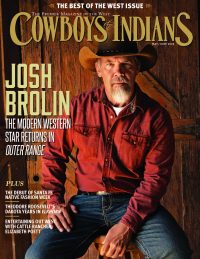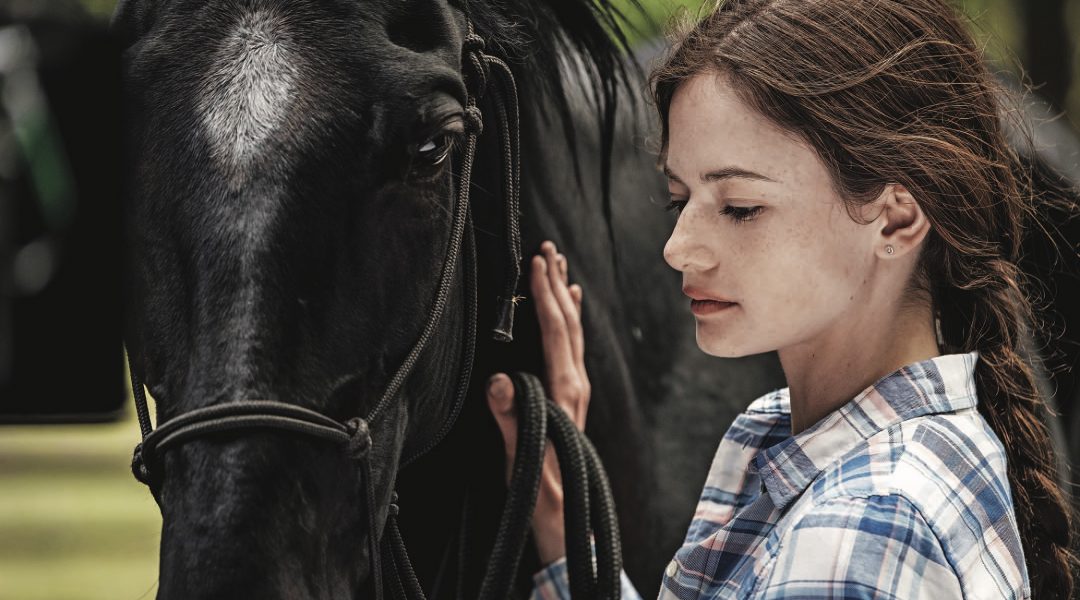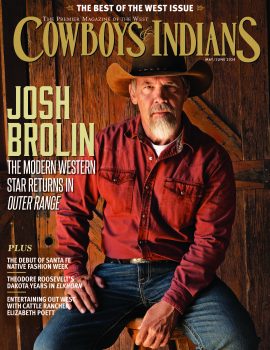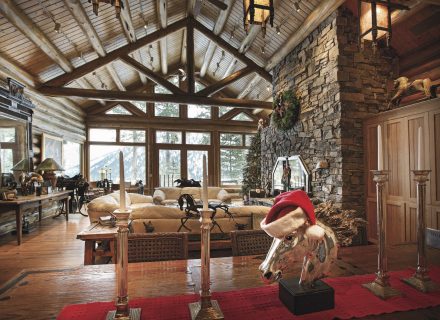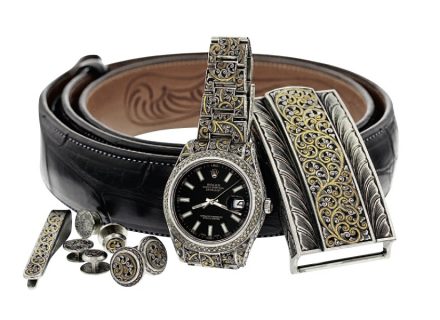With the new adaptation of Black Beauty coming to Disney Plus, director Ashley Avis and actors Kate Winslet, Iain Glen, and Mackenzie Foy prove there are still good horse movies to be made.
Editor's Note: The C&I feature story “Black Beauty Rides Again” galloped straight to the winner’s circle at the American Horse Publications 2021 Equine Media Awards, held in Dallas/Fort Worth on Saturday, September 18, 2021, when Elizabeth Kaye McCall’s story about the 2020 Disney+ Black Beauty remake landed first place in the competitive Freelance Feature category of the Media Professionals Division. For the award-winning story, McCall, who specializes in the horse industry, went behind the scenes with the movie’s filmmakers and horse stars.
“When our producers wanted to remake Black Beauty, they wanted two things: to modernize the story and to make Black Beauty female,” says Ashley Avis, who directed and wrote the screenplay for the new adaptation of the classic horse tale due out on Disney Plus late this year.
The producers got their wish — and more.
Produced by Constantin Film and JB Pictures, the newly reimagined Black Beauty revolves around a wild mustang born in the American West, captured, and taken from her family; and Jo Green, a 17-year-old girl grieving the loss of both parents, who is healed by the horse-human bond. It stars Oscar winner Kate Winslet, voicing the inner thoughts of the horse; Mackenzie Foy (Interstellar) as Jo Green; and Iain Glen (Game of Thrones) as horse whisperer John Manly.
“Having grown up with the book, which had such a big impact on my life, I wanted to honor as many parallels as I could find in a modern light — the original characters, the messages,” Avis says. “What I didn’t want to do was just take the idea and change everything.” She struggled the most with the origin of the titular horse: “What would be the parallel now of an 1800s carriage horse in London?”
In researching Anna Sewell’s 1877 novel, Avis discovered that the English writer’s mission was to improve the treatment of horses of her day by writing a story that would help people empathize with the plight of the animals in Victorian England. “She was a trailblazer for the horses of her time,” Avis says. “Reading about the wild-horse issue and what is going on now, I felt like we could do the same thing with Black Beauty, to help horses of our time. In our version, Beauty was born a wild horse, was rounded up in the American West, and taken away from her family. She then goes to Birtwick Stables, and we introduce the world of those characters from the book in more a modern light.”
Sewell’s novel is now almost 150 years old. Although she intended it for adults — mainly to engender kindness and sympathy in people who worked with horses in Victorian England — it’s today considered a children’s classic and remains a bestselling children’s novel. One of the first novels in the English language to be told from an animal’s point of view, the story foreshadowed natural horsemanship in its advocacy for kinder, gentler treatment of horses and its view that animals are not just beasts of burden but sentient beings who are able to develop a rapport with humans.
Black Beauty resonated with Avis, who read the book as a child and never forgot the message it imparted and the mission it ultimately called her to.
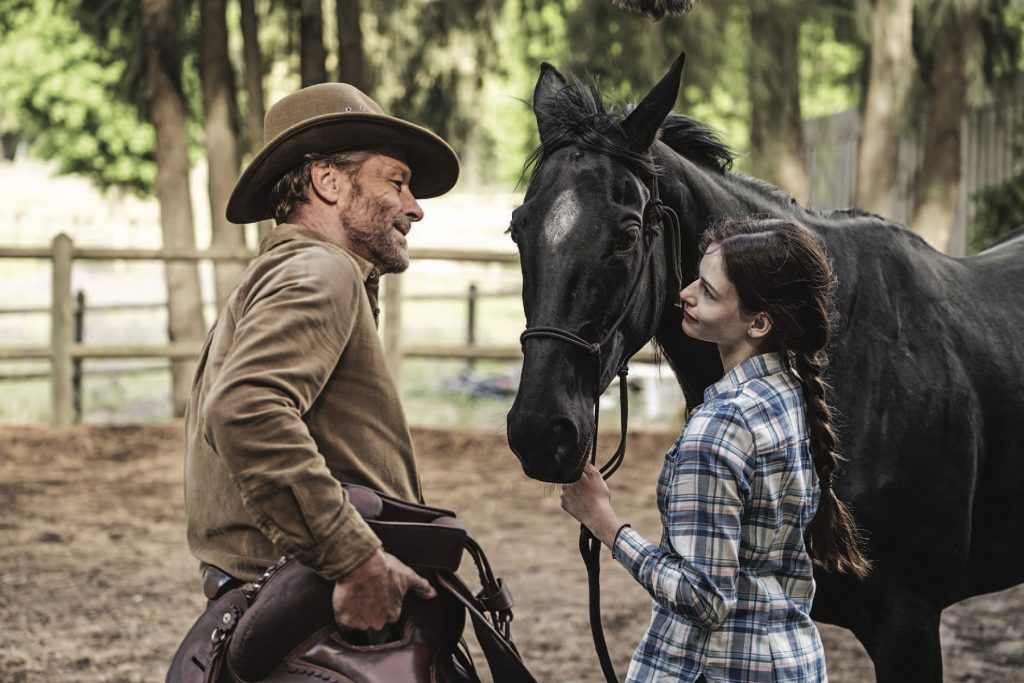
Avis grew up a horse-crazy kid and started riding at 7. But horses had been absent from her life for almost a decade when she first met producer Jeremy Bolt. “I wasn’t sure what we were going to end up talking about,” Avis says. “We just had this beautiful conversation about what inspired us to go into film and what made me want to become a writer and a director, and my two greatest passions: storytelling and horses.”
During that initial conversation, Avis mentioned the impact a mystical beach scene in another horse film, The Black Stallion, had on her as a girl. “He said, ‘My partner and I have wanted to remake Black Beauty for 10 years! If you have a take, let me know.’ I went home and 10 days later, I presented this 40-page-long pitch. It was just the perfect fit at the right time.”
Originally set to film in Canada, the production moved to South Africa after Avis had already begun scouting locations in North America. The movie was shot in 2019 in and around Cape Town and in the wine country of Stellenbosch. One of the main locations was in the red-rock country of Piketberg outside of Cape Town.
“Luckily, I’d been to Cape Town a few times before and knew the landscape would fit perfectly with the American West,” says Avis, who had previously been on location in Wyoming, Utah, and Nevada for an independent documentary. While filming an actual wild-horse roundup in Nevada from a hilltop using a 1,000-mm lens with a doubler, Avis spotted a young colt separated from his mother by a low-flying helicopter. Deeply moved, she vowed to do something. Before leaving for South Africa to shoot Black Beauty, she adopted the colt and his dam from the Bureau of Land Management.
The experience helped shape the new Beauty’s origin story. It also provided virtually seamless footage for the new film. “When I was putting together the footage we got in Piketberg [South Africa] with the footage we got in Utah filming the real Onaqui herd, even the grass was almost identical. It was almost like a gift that we were on the right track trying to put forth the right message,” she says. “Our producers couldn’t tell what was filmed in South Africa and what was filmed in the West.” Through editing, Avis was able to merge footage of a young foal cast as young wild Beauty in South Africa together with the real Onaqui herd she’d filmed, making it appear as if they were an actual family, only feet apart.
The pulse beating through Black Beauty quickened when Avis’ script reached second-generation movie-horse trainer Cody Rawson-Harris in Mount White, New South Wales, Australia. “The film would not be the same without the work that Cody did,” Avis says.
“When I read the script, I was about eight pages in and I said, ‘I’ve got to do this,’ ” says Rawson-Harris, who stepped onto his first film set (The Earthling) at age 7 and has worked 30-plus years preparing animals and educating the actors working with them for feature films, TV series such as the Australian classic The Man From Snowy River, and commercials around the world.
His role on the crew of Black Beauty was the all-important liberty horse trainer. Like a conductor leading an orchestra, a liberty trainer directs an unrestrained horse from a distance using body language, whip cues, and voice. The slightest point of a finger can prompt a head turn; raised arms can signal a rear; other signals, to advance or halt. The animal is literally at liberty to participate or leave.
“Fortunately I’d done a job before in South Africa,” Rawson-Harris says. He caught a flight from Australia to Cape Town, landed at 11 p.m., and “got straight into it” training horses at 8 the next morning. First on the agenda was meeting the horses who would be playing Beauty: four Thoroughbred former racehorses named Jenny, Rosie, Spirit, and Awards, all young mares who were between 4 and 6. A veteran movie horse named Indiana — a gelding (neutered male) — also occasionally stepped in to portray Beauty, despite some physical differences. Jenny would be the main Black Beauty who would interact with Foy; Spirit would play the wild Black Beauty. “Jenny was the only true black one,” Rawson-Harris says. “The rest were dark brown or bay, so we ended up dying them and putting a star on.”
Never before exposed to film sets, the horses were selected through a virtual equine casting process from photos and videos sent by the South African horse team to Rawson-Harris and Avis before he left Australia, and even before he had met the director.
The trainer’s affinity for tight schedules matched the lean production schedule (around 15 or 16 weeks total, counting eight weeks of preproduction). Rawson-Harris had about two months to prepare the horses when he arrived. “I was used to having to think quick on my feet to make things work. This wasn’t your typical Hollywood film, rehearsing horses on the beach for two or three days before we shot. [Almost] every location we went, we virtually had to rehearse in the morning and shoot that day. To achieve what we did on this film, I think was extraordinary. Everything we did with Black Beauty was all trained. That’s what I was there to do — train for the camera.”
Extraordinary is also the word Avis uses to describe what Rawson-Harris was able to get the horses to do in the film. “It was built from trust and love,” she says.
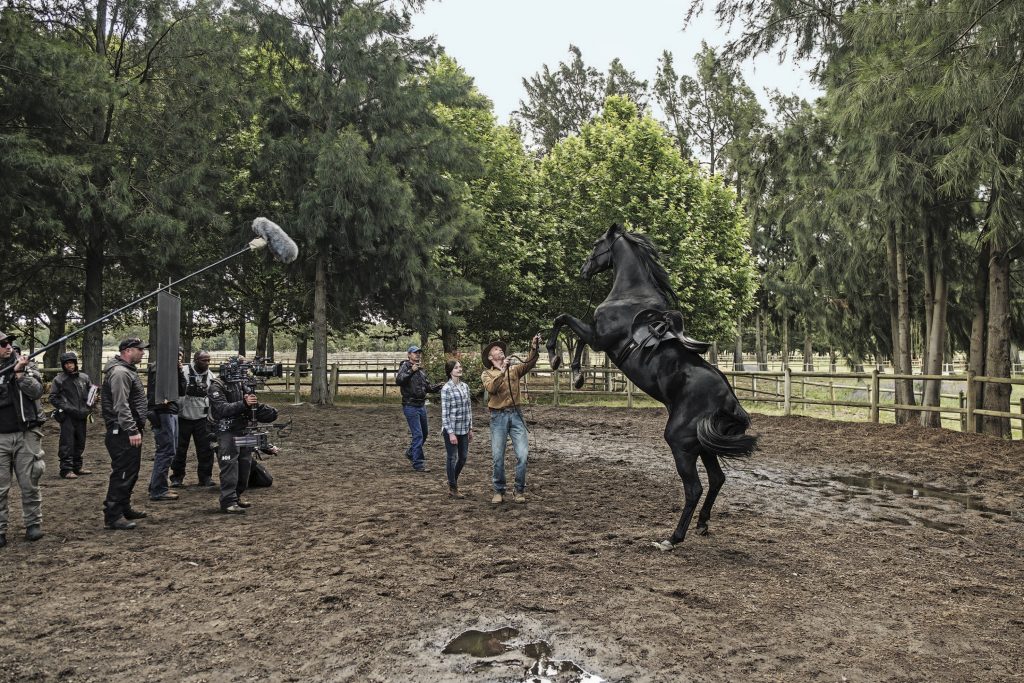
Both Foy and Glen arrived with some prior horse experience. “Iain rode almost a decade for Game of Thrones and Mackenzie in The Nutcracker and the Four Realms,” Avis says. “We were so fortunate to have actors, in Iain and Mackenzie, who were very passionate about the message of the story and wanted to do all that work.” Foy became so hooked on horses that she has continued riding since the movie wrapped.
The safety of both the human and animal actors was paramount on the set. An animal-welfare inspector from Animal Issues Matter (AIM), a registered animal-welfare organization in South Africa, was there at all times, along with a veterinarian.
“Jenny was the better one to have around the actors, even though we used all the horses,” Rawson-Harris says. “She was predominantly on the slow scenes, even though she did a lot of fast stuff as well as riding. She was the safest horse to be around Mackenzie when we had to have the horse rear and look soft and slow. It’s always challenging to train a horse for a film set, but if you have prior preparation, nothing that comes to you is unexpected. The only thing unexpected is the environment when you turn up. When you get to the beach, it’s: ‘How soft is the sand? How cold is the wind? Which way is it coming? Oh, this horse has never seen a wave before.’ Those are the things that wake you up in the morning, and you go, ‘Let’s get there early and make a game plan.’ ”
Rawson-Harris had been training the horses in South Africa for about two weeks when Avis arrived on set. “When you hear the director’s coming, hopefully they like what you’re doing,” he says. “You’ve got to stick with what you know and your heart tells you what you should do.” On their first meeting, Rawson-Harris took Avis straight to the round pen to do a “join-up” process together with a horse. “I think that was the thing that helped Ashley and me connect. It was a joy to train and then be able to collaborate with Ashley. It was a blessing.”
The feeling was mutual. Avis says Rawson-Harris helped her find the themes she was searching for. “The thing I really want people to understand watching Black Beauty is what Anna Sewell wanted to do — make people understand that horses feel love and loss and heartbreak and joy. When Cody said the goal of his work was to help each horse find his peace, I immediately opened my laptop and I wrote that into the script. Cody’s influence became the character of [Iain Glen’s] John in many ways. The way Cody worked with these horses — through that love and connection and finding that peace together — rang true to me as the heart and soul of what we were trying to convey, especially when you’re talking about a horse that’s been taken away from her family.”
Working on Black Beauty was revelatory for director and trainer alike.
The experience restored Rawson-Harris’ faith in the movie business. “I’ve worked with a lot of different producers. I’ve worked with a lot of good directors,” he says. “The difference on this movie, compared to what my life experiences in the industry are, is something I’ve been searching for — that special collaboration. In this industry of make-believe, there was something so real about this. I was losing faith, to be quite honest, that something like this would even exist. Sometimes it’s a long time between drinks for these types of projects to come along. I hope this project shines the light that Ashley wants. If it strikes a chord with people and they want to see more of it, mission accomplished!”
For Avis it was both a mission and an expiation. “I felt so guilty because I grew up riding, and I didn’t know what was going on with wild horses being rounded up in the West,” she says. “The film’s greater theme is making people understand the emotions horses feel, and trying to find that parallel with Anna Sewell doing great things for horses in her time and us trying to do great things for horses today.”
What moved her to make the film — and what continues to stir her as she anticipates the reception when Black Beauty begins streaming soon — is the heartfelt desire to truly help. “We’re illuminating a prevalent issue,” Avis says. “I think the movie will be enjoyed by people of all ages. And I’m really hopeful that the message about wild horses will resonate.”
For more Black Beauty …
Live From Hollywood: Mackenzie Foy
A Conversation With Producer Jeremy Bolt
Behind the Scenes: Shooting on the Beach
Photography: Images courtesy Graham Bartholomew/Disney+
From our November/December 2020 issue.



